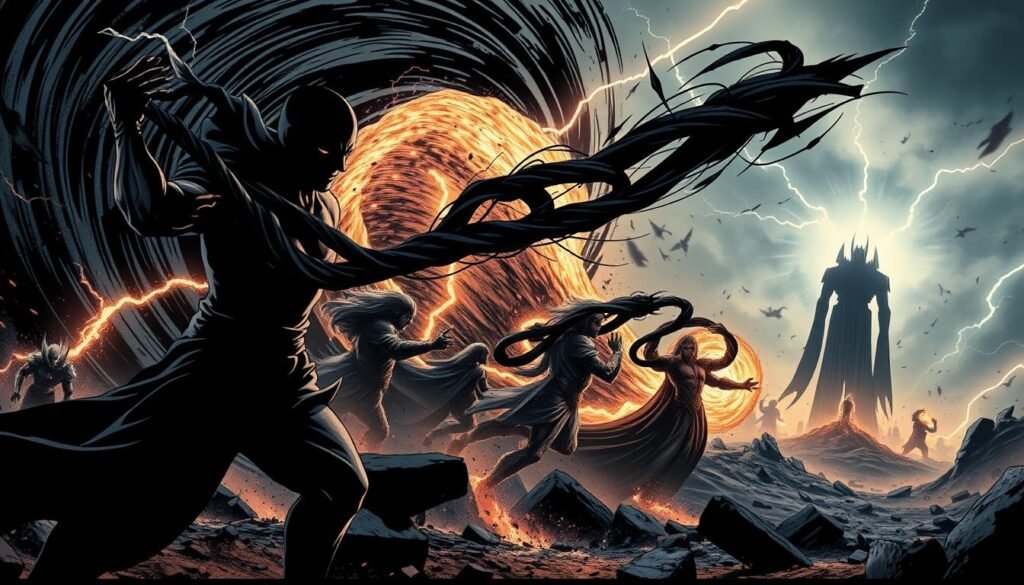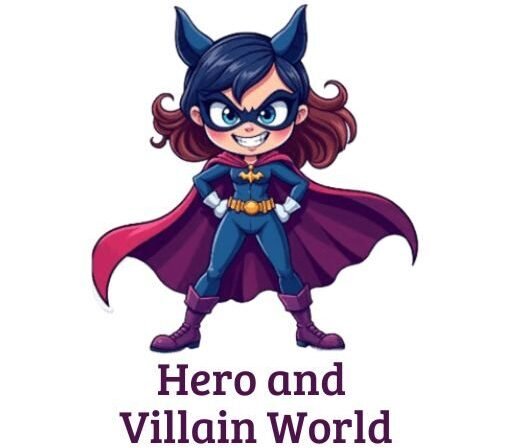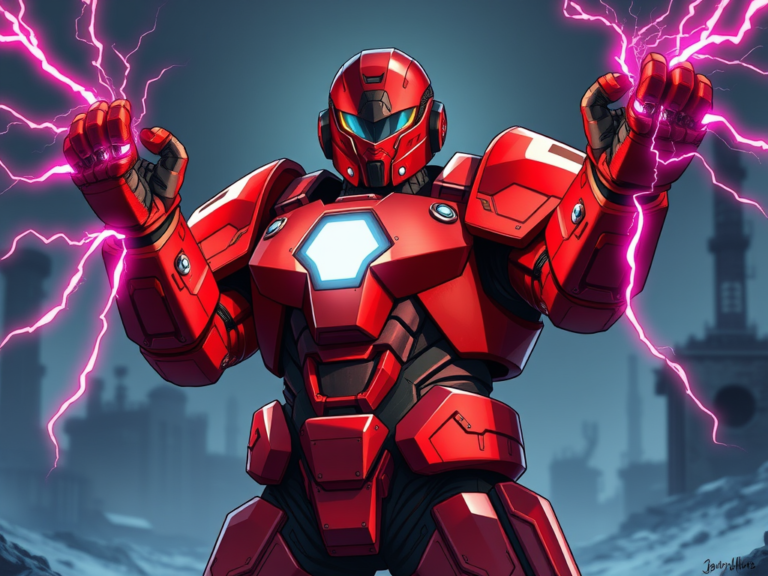Discover the Story of Black Whip: Origins, Powers, and More!

Have you ever wondered what it would be like to wield a power that combines raw strength with emotional intensity? In the world of My Hero Academia, Black Whip is one such ability. This dynamic Quirk, inherited by Izuku Midoriya through One For All, is as fascinating as it is powerful.
Black Whip is an Emitter-type Quirk that produces tendrils of energy, teal outlines shimmering against its dark form.
What makes it truly unique is its emotional activation. Anger fuels its strength, making it a versatile tool in both combat and mobility. For a hero like Izuku, it’s a game-changer.
But where did this incredible ability come from? How does it fit into the legacy of One For All? These are just some of the questions we’ll explore as we dive into the origins, powers, and cultural impact of Black Whip.
Whether you’re a longtime fan or new to the series, there’s something here for everyone.
Who Is Black Whip? Meet the Hero Behind the Quirk
Ever wondered who brought this incredible power to life? The answer lies with Daigoro Banjo, the fifth successor of One For All.
Known for his iconic bandana and hero costume, Banjo was the original user of this dynamic ability. His legacy lives on through Izuku Midoriya, who inherited the Quirk via One For All’s core.

The Creator: Daigoro Banjo’s Legacy
Banjo wasn’t just a hero; he was a force of nature. His fiery personality shaped the emotional nature of the Quirk.
Anger fuels its strength, making it a perfect match for his bold and passionate character. This connection between emotion and power is what makes the ability so unique.
Banjo’s tactical use of the Quirk was legendary. He relied on its tendrils for both offense and defense, showcasing its versatility. His approach was straightforward yet effective, a stark contrast to Izuku’s more creative applications.
First Appearance: When Black Whip Debuted
The first appearance of this Quirk was during the Joint Training arc. In manga Chapter 210 and anime Episode 98, Izuku accidentally activated it during a battle with Class 1-B. This moment marked a turning point for the young hero, as he struggled to control its raw power.
Shinso’s intervention was crucial in helping Izuku regain control. This event highlighted the Quirk’s emotional trigger and its potential risks. It also showcased the bond between Banjo’s vestige and Izuku, as the former guided the latter through the process.
Interestingly, the Japanese name for this ability, Kuro Muchi, carries cultural significance. It reflects the Quirk’s dark, whip-like tendrils and its connection to Banjo’s fiery spirit. Even Tomura Shigaraki briefly inherited it during the Final War, further cementing its importance in the series.
The Origins and Evolution of Black Whip
Ever thought about how a single ability could evolve through generations? Black Whip, a dynamic Quirk, has a fascinating history. It started as a standalone power and became part of One For All’s legacy.
This evolution is a testament to the quirks system’s complexity and the time it takes for abilities to grow.

How Black Whip Became Part of One For All
The integration of this Quirk into One For All is tied to the concept of Quirk Singularity. This phenomenon allows multiple quirks to merge, creating a more powerful ability.
The original user’s vestige transferred it to Izuku Midoriya in a dream. This moment marked a turning point in the Quirk’s journey.
All For One’s brother played a crucial role in laying the foundation for this transfer. His ability to pass on powers set the stage for Black Whip’s integration. This process highlights the body’s adaptability and the emotional connection between users.
From Daigoro to Izuku: The Quirk’s Journey
Daigoro Banjo, the original user, wielded this power with unmatched passion. His fiery personality shaped its emotional trigger. When Izuku inherited it, he brought a new level of creativity to its use. From binding enemies to enhancing mobility, the Quirk’s versatility grew.
One of the most iconic moments was during the Paranormal Liberation War. Izuku used the tendrils to compensate for his injured arms.
This showcased the Quirk’s potential as both a weapon and a support tool. The emotional trigger, once a liability, became a controlled weapon in his hands.
Black Whip in Other Media: Anime and Manga Highlights
This Quirk has made waves beyond the manga. In the anime, it debuted in Season 5, Episode 98, titled “That Which Is Inherited.” Its appearance during the War Arc episodes further solidified its importance. The time and effort put into animating its mechanics paid off.
It also appears in mobile games like My Hero Academia: Ultra Impact and The Strongest Hero. These games highlight its special move animations and unique mechanics. Fans can experience the Quirk’s power firsthand, adding a new layer to its legacy.
| Media Format | Key Features |
|---|---|
| Anime | Detailed animations of tendrils, emotional triggers highlighted |
| Manga | Focus on tactical uses, emotional depth |
| Video Games | Interactive mechanics, special move animations |
“The journey of a Quirk is as much about its users as it is about its power.”
From its origins to its evolution, Black Whip has become a symbol of growth and adaptability. Whether in the hands of Daigoro Banjo or Izuku Midoriya, it continues to inspire. To learn more about its history, check out this detailed guide.
Black Whip: Powers and Weaknesses
What makes a Quirk truly powerful is not just its raw strength, but how it’s wielded. This ability is a perfect example of a dynamic power that combines versatility with emotional depth.
Its black tendrils can be used for everything from capturing enemies to enhancing mobility. However, its emotional triggers make it both a weapon and a risk.
Unleashing the Tendrils: How the Quirk Works
The ability produces energy tendrils that can extend to medium range. These black tendrils are durable and highly controllable, making them ideal for combat and utility.
They can reinforce the user’s body, allowing for stronger strikes or protective barriers. This makes it a versatile tool in any hero’s arsenal.
However, control is key. The tendrils are fueled by emotions, particularly anger. While this amplifies their power, it also increases the risk of losing control. This emotional trigger is both a strength and a weakness, requiring the user to stay focused under pressure.
Ultimate Moves: Froppy Style and Beyond
One of the most iconic uses of this Quirk is Froppy Style. It combines the tendrils’ mobility with strategic positioning, allowing the user to swing and grapple like a pro.
Another move, Blackchain, uses the tendrils to bind enemies with precision. These techniques showcase the Quirk’s adaptability in combat.
Deku Overlay takes it a step further. This move reinforces the user’s arm with the tendrils, creating a biomechanical system that enhances strength and durability. It’s a testament to the Quirk’s potential when mastered.
The Emotional Trigger: Strengths and Risks
The emotional aspect of this Quirk is its defining feature. Anger fuels its power, making it stronger in intense situations. This can be a game-changer in battles, but it also carries risks. Emotional instability can lead to loss of control, making it a double-edged sword.
Izuku Midoriya’s journey with this Quirk highlights its challenges. He learned to channel his emotions effectively, turning a potential weakness into a controlled weapon. This balance is crucial for anyone wielding this ability.
Conclusion
What makes a quirk unforgettable is its ability to evolve and inspire. This ability, with its tendril mechanics, draws clear inspiration from Marvel’s Spider-Man and Venom, blending raw power with emotional depth.
Its journey from Daigoro Banjo to Izuku Midoriya highlights its narrative significance in My Hero Academia lore.
Curious about how it works? FAQs reveal that it’s inherited through One For All, with emotional triggers adding both strength and risk. Its limitations, like the need for control, make it a challenging yet rewarding power for any hero.
As the story progresses, this Quirk continues to shape key battles and character development. For more insights, explore related articles on HeroandVillainWorld.com. Share your thoughts with #BlackWhipAnalysis and stay tuned for future developments in the series!
As Daigoro once said, “This Quirk isn’t one you can use carelessly. It’s a top-grade ability, but it requires control.” A reminder that great power comes with great responsibility.
FAQ
Q: Who created the Black Whip quirk?
A: The quirk was originally wielded by Daigoro Banjo, a former pro hero. His legacy lives on through its integration into One For All.
Q: When did Black Whip first appear?
A: It made its debut in the manga and anime when Izuku Midoriya unlocked it during a high-stakes battle, showcasing its unique abilities.
Q: How does Black Whip work?
A: The quirk allows the user to summon dark tendrils from their body, which can be used for mobility, combat, or rescue missions.
Q: What are the strengths of Black Whip?
A: Its versatility stands out—whether it’s for grappling, restraining enemies, or creating powerful attacks like the Froppy Style technique.
Q: Are there any risks to using Black Whip?
A: Yes, its power is tied to the user’s emotions. If not controlled, it can become unstable and difficult to manage.
Q: How did Black Whip become part of One For All?
A: Daigoro Banjo passed it down as one of the quirks stored within One For All, allowing future users like Izuku to access its abilities.
Q: Has Black Whip appeared in other media?
A: Absolutely! It’s been featured in both the anime and manga, with standout moments that highlight its dynamic and thrilling nature.







